
|
| Profile -- Mahatma Gandhi (1869-1948) |
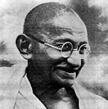 Mohandas Karamchand Gandhi was among India's most fervent nationalists, fighting for Indian independence from British rule. Gandhi spearheaded the non-violent method of protest, which was termed "Satyagraha". For his dedicated service to the Indian Independence movement, Gandhi is often called the "Father of the Nation."
Mohandas Karamchand Gandhi was among India's most fervent nationalists, fighting for Indian independence from British rule. Gandhi spearheaded the non-violent method of protest, which was termed "Satyagraha". For his dedicated service to the Indian Independence movement, Gandhi is often called the "Father of the Nation."
Early Life: Gandhi was soon sent to London to study law and there he quickly became aware of his ineptness in social gatherings. In his autobiography, Gandhi narrates his attempts at getting Westernized, including violin and ball-room dancing lessons. In 1891 Gandhi returned to India to practice law but was too shy and awkward and thus met with little success.
South Africa and the Beginnings of SatyagrahaIn 1893, Gandhi went to South Africa, then under British control, for legal work. Racial discrimination was freely practiced and in a incident that would change his life, Gandhi was forcefully evicted from a first class train compartment. This incident in South Africa opened Gandhi's eyes to the rampant racial discrimination and humiliation faced by non-whites. For 21 years, Gandhi stayed in South Africa, working towards rights for Indians in South Africa. He began the "Tolstoy Farm" in South Africa and edited the newspaper called 'Indian Opinion'. Gandhi began experimenting with non-violent methods of protest, promoting civil disobedience and strikes or "hartals." Gandhi was arrested several times but his action prompted some reforms. Ironically, for his humanitarian work during the 1899-1902 Boer War and Zulu Rebellion, Gandhi was decorated by the British authorities.
Early Campaigns in IndiaIn 1915 Gandhi returned to India and toured the country extensively, making Sabarmati Ashram in Gujarat, his base. In July 1917, Gandhi first stepped into the limelight in India, when he headed a protest against the exploitation of the Indigo workers in Champaran (Bihar). By March 1918 Gandhi led a peaceful strike of Ahmedabad (Gujarat) Mill workers for higher wages and in June 1918, a remission of taxes was granted in the drought hit area of Kheda (Gujarat) after a no-tax campaign led by Gandhi.
Rowlatt Satyagraha: But the initial phase of the Rowlatt Movement had proved the potential of Satyagraha and thus both the Indian National Congress and Khilafat leaders supported the Non Co-operation Movement of 1920. The participation of women, children, all castes and religions made this a truly mass movement and the era of Gandhism entered its greatest phase. But Gandhi called off the movement because of a violent incident at Chaurichaura (United Province).
The Doctrine of Satyagraha"Satyagraha" means insistance and adherence to truth, in a non-violent manner. Initially the term "passive resistance" was used to describe non-violent protest but Gandhi insisted that Satyagraha was more than that. Satyagraha was a way of life, an evolving technique to bring change without violence. Non violence or "Ahimsa" to Gandhi was imperative as a search for truth involved fighting injustice. Fighting injustice required one to love fellow beings and this love demanded non violence. Gandhi believed it was necessary to first feel for the oppressed then fight for justice, thus making Satyagraha a "truth" and "justice" seeking force. Facing any brutality without resorting to violence demanded exceptional self-control and courage. But Gandhi insisted that a Satyagrahi could only oppose an unfair act, never a person. Compassion for the suffering and constructive work were necessary ingredients of satyagraha. The success of Satyagraha can be explained by the fact, that anyone, truly wishing to, could perform a Satyagraha with/without a leader. A single person could fast in protest, a group could go on strike, women could picket shops selling foreign goods etc. Thus all Gandhi's Satyagrahas were open to everybody, irrespective of caste, creed, sex or age. While performing Satyagrahas, Gandhi was an expert at symbolism. In 1930, when the Civil Disobedience movement was launched, Gandhi chose to break the salt law. The image of this frail man, holding aloft a handful of salt swept India into a flurry of civil action against the British authorities, simply because the salt issue affected every single Indian. Similarly, popularization of the "Charkha" or spinning wheel was due to its practical use of spinning khadicotton and as a symbol of economic independence. Methods of Satyagraha included prayers, fasts, penance, strikes, defying certain civil laws, spreading literacy, removal of social inequalities etc.
Last Phase:
Gandhi-Visions of the ManIn his personal life Gandhi's staunch adherence to his principles was often seen as eccentric. His pre-occupation with diets, meditation and abstinence from sexual relations have been widely written and commented upon. As a family man, the 'Father of the Nation', often had no time to be a father to his 4 sons. Indeed Gandhi's relationship with his eldest son was deeply troubled and in 1948, Harilal was disallowed from lighting his father's pyre, for once having converted to Islam. Kasturba, was always seen supporting her husband, but whether she was offered any other choice is unlikely. Indeed when Gandhi insisted on not sending their sons to government educational institutions, Kasturba protested. But Gandhi had his way.
But no one view could possibly represent the man whose philosophy of Satyagraha influenced people as far flung as the Civil rights campaigns of Martin Luther King to Nelson Mandela's anti-aphartheid movement. Ultimately Gandhi became synonymous with the Indian Independence movement and R. Tagore expressed the vision of millions when he called Gandhi the "Great Soul"; "the Mahatma". |
|
|

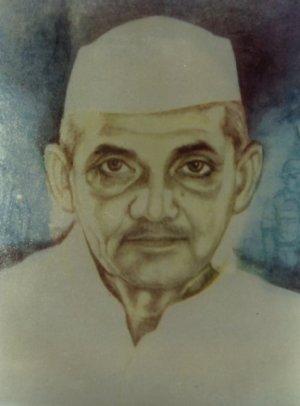
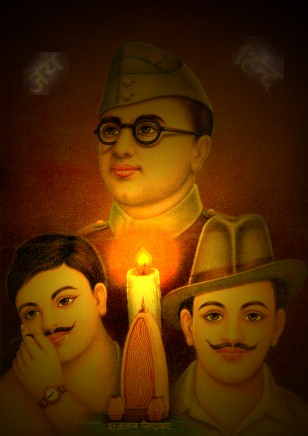

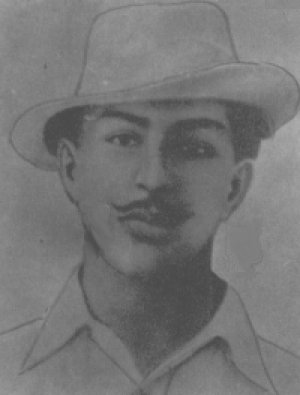
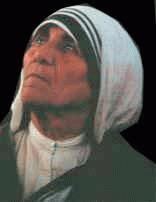

 But on the eve of Independence and after, Gandhi spent much time in fasting, grieving over partition and performing Satyagrahas to quell the sectarian violence that partition brought. On Independence day, Gandhi was in Calcutta praying for peace and indeed the city, which had seen Hindu-Muslim massacres for months, remained calm. In January 1948 Gandhi once again began a fast to protest against religious violence but assurances from religious leaders led him to break his fast on 18th January 1948. 12 days later, a Hindu fanatic, Naturam Godse, blaming Gandhi for partition and "betraying" Hindus, shot Gandhi at a prayer meeting in Delhi. This was a tragic end for a man dedicated to non-violence.
But on the eve of Independence and after, Gandhi spent much time in fasting, grieving over partition and performing Satyagrahas to quell the sectarian violence that partition brought. On Independence day, Gandhi was in Calcutta praying for peace and indeed the city, which had seen Hindu-Muslim massacres for months, remained calm. In January 1948 Gandhi once again began a fast to protest against religious violence but assurances from religious leaders led him to break his fast on 18th January 1948. 12 days later, a Hindu fanatic, Naturam Godse, blaming Gandhi for partition and "betraying" Hindus, shot Gandhi at a prayer meeting in Delhi. This was a tragic end for a man dedicated to non-violence. 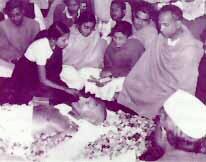 Historians have numerous portrayals of Gandhi. Nationalists revere him, Hindu fanatics blamed him for partition, Dalits suspected Gandhi's commitment to their upliftment and British imperialists, like Winston Churchill, hated him. Judith Brown portrays Gandhi as a master of symbolism and cultivator of mass support, while recent authors harp on Gandhi's "eccentricities"
Historians have numerous portrayals of Gandhi. Nationalists revere him, Hindu fanatics blamed him for partition, Dalits suspected Gandhi's commitment to their upliftment and British imperialists, like Winston Churchill, hated him. Judith Brown portrays Gandhi as a master of symbolism and cultivator of mass support, while recent authors harp on Gandhi's "eccentricities"